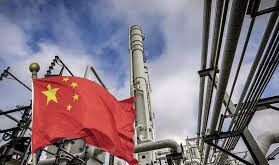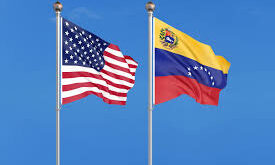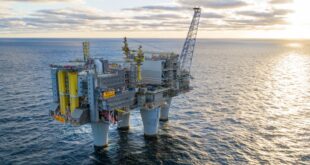Iraq is planning to increase its crude oil production to phased targets of 5 to 8 million barrels per day (bpd) over time, according to the first vice president of the Iraq National Oil Company (INOC), Hamid Younis, last week. The director general of the Iraq Oil Exploration Company (IOEC), Ali Jassim, added that the next phase will see “remarkable activity” in the exploration sector, including operations in the Western Desert and the Nineveh governorate. Given the current delicate supply-demand balance in the global oil pricing matrix, sizeable new supply would go some way to relieving the economic damage being done to many countries by enduring high oil and gas prices, but just how realistic are these statements on higher oil volumes from Iraq?
In broad terms, the statements are entirely realistic, with Iraq holding a very conservatively estimated 145 billion barrels of proven crude oil reserves (nearly 18 percent of the Middle East’s total, around 9 percent of the globe’s, and the fifth largest in the world). However, according to the International Energy Agency (IEA) in its 2012 report on the country, the extent of Iraq’s ultimately recoverable oil resources is subject to a large degree of uncertainty and may well turn out to be a lot more. Much of the earlier data that fed into the 145 billion barrels reserves figure was derived from the United States Geological Survey (USGS) 2000 assessment and, using this data, the IEA’s 2012 analysis put the level of ultimately recoverable crude and natural gas liquids resources in Iraq at around 232 billion barrels. As at the end of 2011, only 35 billion barrels of that 232 billion figure had been produced.
Having said this, as the IEA itself pointed out, there are other estimates from reliable sources that Iraq’s undiscovered oil resources are considerably higher even than the IEA’s figures. When Iraq’s Ministry of Oil came up with its own crude oil reserves figure of 143 billion barrels in 2010 – before it was upgraded to 145 billion barrels two years later – the Ministry stated that Iraq’s undiscovered resources amounted to around 215 billion barrels. Moreover, said the IEA, a detailed study by Petrolog, published in 1997, reached a similar figure but even this did not include within this 215-billion-barrel figure, crude oil resources in the parts of northern Iraq under the administration of the government of the semi-autonomous region of Kurdistan (the KRG).
Back in 2012, and even using the more conservative USGS figure, Iraq had produced only 15 percent of its ultimately recoverable resources, compared with 23 percent for the Middle East as a whole, according to the IEA, and the Agency expected exploration efforts to add substantially to proven reserves in the future. Moreover, drilling in Iraq has long had an exceptionally high success rate: of 530 potential hydrocarbon-bearing geological prospects identified by geophysical means in Iraq as of the time of the 2012 IEA report, only 113 had been drilled, with oil having been found in 73 of them. The IEA also noted that prior to the then-recent surge in exploration activity in the KRG area, more than half of the exploratory wells in Iraq had been drilled prior to 1962, a time when technical limits and a low oil price gave a much tighter definition of a commercially successful well than would be the case today.
It is apposite to note at this point, however, that it is one thing to have huge levels of reserves and recoverable resources, but it is quite another to drill them and export them, and over the period from when the IEA report was produced in 2012 to now, crude oil production in Iraq has risen from just over 3 million bpd to just over 4 million bpd only. It could be said that this is an impressive 25 percent rise, but in absolute terms, it ranks as an extremely poor return on the crude oil resources that Iraq has, particularly when factoring in how easy its oil is to recover, as evidenced by the country’s crude oil having the lowest lifting cost in the world of US$1-2 per barrel, alongside the crude oil of Saudi Arabia and Iran.
In contrast to actual oil production figures, in 2013 Iraq launched its ‘Integrated National Energy Strategy’ (INES), which formulated the three forward oil production profiles for Iraq, as analyzed in depth in my latest book on the global oil markets. The INES’ best-case scenario was for crude oil production capacity to increase to 13 million bpd (at that point by 2017), peaking at around that level until 2023, and finally gradually declining to around 10 million bpd over a long period thereafter. The mid-range production scenario was for Iraq to reach 9 million bpd (at that point by 2020), and the worst-case INES scenario was for production to reach 6 million bpd (at that point by 2020). These different crude oil output trajectories were also in line with those laid out in the IEA’s 2012 report. Specifically, in the IEA’s ‘Central Scenario’ of 2012, Iraq’s oil production increased to more than 6 million bpd (by 2020), and then 8.3 million bpd by 2035. In the IEA’s ‘High Case’, crude oil production would surpass 9 million bpd in 2020 and then rise to 10.5 million bpd in 2035.
The foundation for Iraq to achieve these massive increases in crude oil production is, therefore, absolutely solid. So, why has it not done so yet? There are two basic reasons for this, both of which – and other tangential reasons – are analyzed in full in my latest book: the first being the endemic corruption that has plagued the Iraq oil sector, particularly since the fall of Saddam Hussein in 2003, and the second – in part, a function of the first reason but not completely – is the failure to build the Common Seawater Supply Project (CSSP). The culture of corruption in Iraq has been covered in many of my previous articles but has also been repeatedly attested to by the independent Transparency International (TI) in various of its ‘Corruption Perceptions Index’ publications, in which Iraq normally features in the worst 10 out of 180 countries for its scale and scope of corruption. “Massive embezzlement, procurement scams, money laundering, oil smuggling and widespread bureaucratic bribery that have led the country to the bottom of international corruption rankings, fuelled political violence and hampered effective state-building and service delivery,” TI states. “Political interference in anti-corruption bodies and politicization of corruption issues, weak civil society, insecurity, lack of resources and incomplete legal provisions severely limit the government’s capacity to efficiently curb soaring corruption,” it concludes.
This may be a key reason why the CSSP has not gone ahead, but if Iraq could ringfence the Project as much as possible from corrupt elements then it could start to achieve the huge increases in crude oil production that it envisages. The CSSP itself involves taking seawater from the Persian Gulf and then treating it before transporting it via pipelines to oil fields to boost pressure and increase oil take. Initially, the CSSP was to have cost around US$10 billion for it to be able to supply around 6 million bpd of water to at least five oil fields in the southern Basra area and one in the Maysan region. To put the risk-reward profile of the CSSP in context: the longstanding huge fields of Kirkuk and Rumaila – together having produced around 80 percent of Iraq’s cumulative oil production – require major ongoing water injection, with reservoir pressure at the former dropping significantly after the output of only around 5 percent of the oil in place (OIP). Another huge Iraq oilfield – Rumaila – was able to produce around 25 percent of its OIP before water injection was required because its main reservoir formation in the south connects to a large natural aquifer which has helped to push the oil out of the reservoir. The water requirements for most of Iraq’s oilfields fall between these two cases, but the need for oilfield water injection is highest in southern Iraq, in which water resources are also the least available.

 Iran Energy News Oil, Gas, Petrochemical and Energy Field Specialized Channel
Iran Energy News Oil, Gas, Petrochemical and Energy Field Specialized Channel



